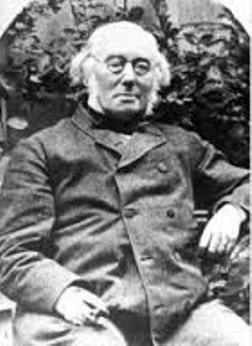
“The Person of Christ” in Kapic & McCormack (eds), Mapping Modern Theology, 149-173.
McCormack introduces his essay on the Person of Christ by noting that the doctrine of the person of Christ has to do with the ontological constitution of the mediator as divine and human. This duality of Jesus’ being has its roots in Scripture, and led to ancient debates culminating in 451 at the Council of Chalcedon. Here the essential parameters of the doctrine were set: the union of two natures—divine and human—in the one person, Jesus Christ. Nevertheless, Chalcedon did not fully settle the christological questions. The relation of the two natures to one another, and the identification of the Subject of the person’s activity continued to arise in the history of the church as matters of controversy. For example, in the seventh-century, the church debated whether, in fact, Jesus had two wills. The Sixth Ecumenical Council (Constantinople III, 681) concluded that he did, the human will functioning as any other human will, though always in agreement with the will of the Logos. The sacramental dispute between Lutheran and Reformed theologians in the Reformation period revolved around whether the attributes of the one nature may be applied to the other nature, or whether the attributes of each nature should more properly be attributed to the person of Christ. For example, may we say that Jesus’ humanity is omnipresent or that God can die? Or would we better apply these various attributes to the person of Jesus in his unique divine-human unity?
In the modern period, a growing awareness of human self-consciousness and development posed sharp questions to Chalcedon. Cyril of Alexandria had portrayed Jesus’ humanity as static, almost an inert instrument of the Logos who was the acting Subject of the man Jesus Christ. Nevertheless, Constantinople III affirmed that each nature possessed its own mind and will. In 1848, then, David Friedrich Strauss argued that this must mean that Jesus was possessed of two personalities, one infinite and one finite. If this was so, it must inevitably mean that Jesus’ divine nature overwhelms his human nature with the result that his humanity differs from ours. Is Jesus fully and genuinely human? This modern concern is one that McCormack shares.
McCormack identifies the Friedrich Schleiermacher and Georg Hegel as the two men who set the agenda for modern christology. Schleiermacher conceived of God in classic terms of an absolute and omnipotent God standing outside the created order. Nevertheless God’s activity is directed toward the world as a continual causative power, guiding and sustaining the ‘system of nature’ as a whole. God’s whole creational and providential purpose finds its climax and goal in Jesus of Nazareth. Jesus is perfectly open to God and so possesses a perfect God-consciousness. So powerful is this God-consciousness that he is able to live a sinless life and so become the Redeemer who communicates the power of his own God-consciousness to others. But Schleiermacher is concerned about human development and so in his view, the divine essence unites itself to human nature in the person of Jesus only gradually. This allows room for personality development in the human Jesus, as McCormack notes:
It was only as Jesus’s “higher powers” (reason and will) developed that the uniting activity could produce that redemptive power that would emanate from him to those who came after. To be sure, the uniting activity was present in such a way that it kept him preserved from sin at every point—but always in a manner congruent with his stage of human development.[1]
Because Jesus has a perfect passivity with respect to God’s uniting activity,
he is the replication in human form of the pure activity which God is—an incarnation of God by any other name. And he alone can be this. It is in him alone that the creation of human nature is made complete (in his pure receptivity to God). This is something that can only happen once. Therefore, Christ is utterly unique, and what takes place in him is final (in the sense of being unrepeatable) and universal in its significance.[2]
Hegel, more a philosopher than a theologian, approaches the question very differently. Whereas Schleiermacher clings to classical theism, Hegel’s God is a being-in-becoming, a God who is realising his divine being in and through the processes of world history. God is not a being complete and external to the world. Rather, God is on a journey to become who he is; God requires another to become self-conscious. Thus, God posits another alongside himself, a finite creature, the world, and in the world, a particular finite and personal creature, who is yet identified with God himself: Jesus Christ. Now, God has another over against himself in whom he also recognises himself. This other—Jesus—is separate from God, the opposite of God, and indeed in his suffering and death experiences the very antithesis of all that God is. In Jesus Christ, then, God has created and embraced and experienced the extremity of human alienation, finitude and death, and has taken it into the very life of God, triumphing over it.
The God who identifies himself with the crucified Jesus by raising him from the dead is the God who is made known as Self-sacrificial love, a love that goes to any extreme to be reconciled with the object of his love. And in that all of this is revealed to those who follow Jesus, their knowledge of God is made to be the vehicle of God’s own Self-knowledge. God knows himself in and through their knowledge of him.[3]

McCormack then goes onto discuss other forms modern christology has taken, including the kenotic christology of Gottfried Thomasius, the moral-historical christology “from below” of Albrecht Ritschl, and the “classical” yet post-metaphysical christology of Karl Barth. McCormack refers to all these christological models as the “basic paradigms” which shape the contours of almost all other modern christologies, including those of Moltmann and Pannenberg, the liberationists and feminists, Walter Kasper and Hans Urs von Balthasar.
McCormack’s essay is typically thorough, learned and well worth reading. Yet a significant question can be raised about his treatment of modern christology. McCormack argues that,
Modern Christology was born in a reaction not so much against the theological values that sought expression in and through those categories [of the Chalcedonian formula] as against the categories themselves. We make a huge mistake at the outset if we understand modern Christology as simply a repudiation of the dogma of the church. Initially, at least, it was anything but that. … The modern period saw a transformation in the categories employed to explain the basic values that came to expression in the formula, but no abandonment of those values.[4]
McCormack identifies these values very simply in terms of the Chalcedonian formula: Jesus is both divine and human in one person. By limiting the theological values of Chalcedon and the broader ancient tradition in this fashion he can suggest that Schleiermacher, Hegel and Ritschl are, to some extent at least, “orthodox” in a Chalcedonian sense. He is, of course, certainly aware that this is a problematic suggestion and acknowledges with respect to Schleiermacher and Hegel,
For both, the triunity of God is the consequence of the divine act of relating to the world in Christ and through the church. The Trinity is an eschatological rather than a protological reality. And that means, as Schleiermacher put it, God is not differentiated in himself in independence of his union with Christ and with the church.[5]
Surely this is a fatal departure from ancient theological values in which God is eternally the triune God, and Christ and the Spirit are eternal God. Why, then, has McCormack argued thus?
[1] McCormack, “The Person of Christ,” 159.
[2] McCormack, “The Person of Christ,” 160, original emphasis.
[3] McCormack, “The Person of Christ,” 162.
[4] McCormack, “The Person of Christ,” 150-151, 157.
[5] McCormack, “The Person of Christ,” 163.